
views
What do yellow flowers mean symbolically?

In general, yellow flowers symbolize friendship, joy, and optimism. These bright, sunshine-y blooms exude positive energy. They’re often gifted between friends and family members to convey feelings of affection, express gratitude, or simply brighten someone’s day. Yellow flowers are also associated with abundance, good luck, hope, and fresh starts. There are a few yellow flowers that have more complicated meanings. Yellow tulips, for example, symbolize unrequited love, while marigolds represent remembrance for a loved one. We’ll cover the different meanings of each yellow flower in depth below, so you can be sure you’re choosing the right bloom for any occasion!

Yellow flowers also have different symbolic meanings across cultures. In China and Japan, for example, yellow flowers are often associated with good fortune, prosperity, and longevity. In France, on the other hand, the color yellow symbolizes jealousy and betrayal, so yellow flowers have a much more negative connotation. Here are a few more different cultural, historical, and religious meanings of yellow flowers: Mexico: death and remembrance for loved ones who have passed (associated with marigolds in particular) Ancient Mayan Culture: abundance and prosperity, due to the similarity in color to corn 18th Century Victorian Culture: jealousy, hostility, accusations of infidelity, or rebuffing someone’s romantic advances (specifically yellow roses) Buddhism: resurrection, enlightenment, and spiritual awakening (specifically yellow water lilies and lotuses)
Popular Yellow Flowers & Their Meanings

Sunflowers are associated with joy, optimism, and friendship. With their bright, cheerful appearance, sunflowers bring positive energy to all who behold them. They’re thought to be powerful symbols of happiness, good luck, and longevity. Sunflowers are also the official flower of National Friendship Day, so they’re the perfect gift to let a friend know how much you appreciate them! In China sunflowers are associated with good fortune, prosperity and vitality. Sunflowers are also commonly gifted to couples who are celebrating their third wedding anniversary.
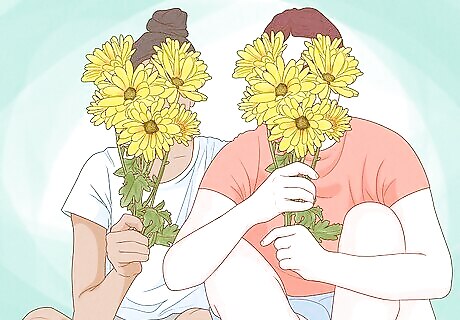
Yellow daisies represent friendship and well wishes. These cheerful flowers share many symbolic meanings with their cousin, the sunflower. A bouquet of yellow daisies is the perfect way to convey your affection to a close friend, or to cheer someone up if they’ve been going through a tough time. They also make a wonderful “get well soon” gift. In the Victorian era, daisies also symbolized loyalty and the ability to keep a secret. As a result, a gift of daisies is also a great way to let someone know that their secret is safe if they've recently confided in you about something.
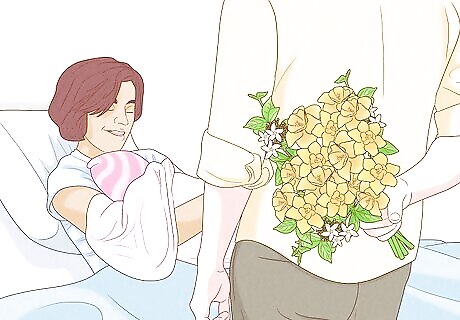
Daffodils symbolize new beginnings and rebirth. Daffodils are some of the first flowers to bloom at the end of winter, signaling the start of spring and the promise of warmer, brighter days. Because of this, daffodils have come to be associated with fresh starts, optimism, and hope. If you want to convey this message to someone, just be sure to get more than one daffodil. While a bouquet of daffodils symbolizes this joyful message, a single daffodil is said to bring bad luck.
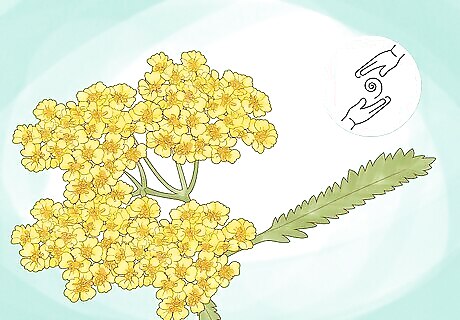
Yarrow flowers symbolize healing energy. According to Greek mythology, the hero Achilles used yarrow to stop his soldiers’ wounds from bleeding, so the flower’s associations with wellness and healing date back thousands of years. If you have a loved one who is suffering from an illness or injury, yarrow makes the perfect “get well soon” gift! Yarrow has long been used in herbal medicine practices to treat minor wounds, soothe the stomach, and relieve indigestion. There haven’t been many scientific studies to confirm these effects, but people still do use yarrow as herbal medicine today. If you’re considering using yarrow as a medicine, be sure to consult with your doctor first, as there can be side effects or allergic reactions. If you don’t feel comfortable ingesting yarrow, you can simply display them in your home to bring some cheerful, healing energy to your living space!
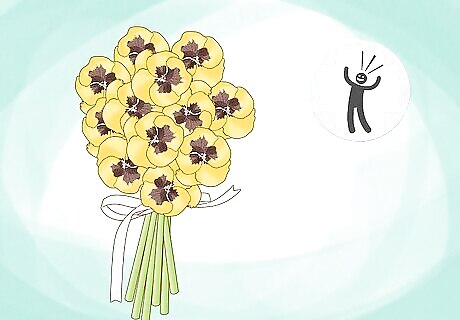
Yellow pansies represent happiness and a cheerful disposition. These beautiful flowers are a great way to let someone know that you appreciate their bright, sunshine-y personality. Pansies in general are also associated with free-thinking and loving thoughts.

Buttercups represent playfulness, innocence, and joy. These cute, tiny blossoms have a very cheerful air about them. They’re associated with the arrival of spring, and many people see them as a reminder to embrace the simple pleasures in life and maintain a sense of childlike wonder in all you do.
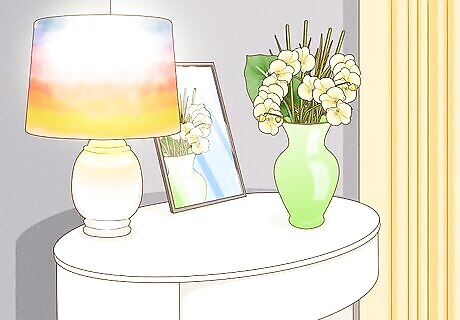
Yellow orchids radiate positivity and warmth. They’re associated with friendship, joy, and prosperity, so they would make a wonderful gift for almost any occasion. Give yellow orchids to someone you care about to lift their spirits, or display them in your home to brighten up your living space. Yellow orchids are also common gifts to congratulate someone on an achievement, or to wish them good luck.
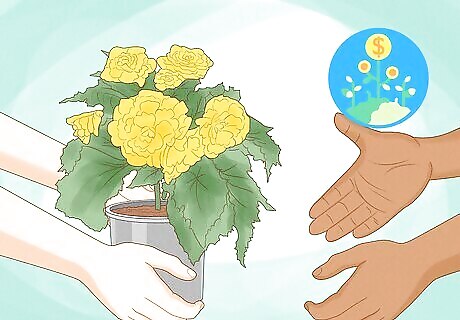
Yellow begonias are associated with abundance and contentment. They symbolize wealth and prosperity, so they’re the perfect choice if you’re trying to attract these things into your life. They would also make a lovely gift to someone to congratulate them on achieving success or abundance in their life.
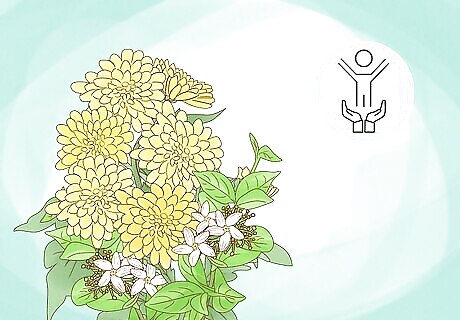
Yellow chrysanthemums are associated with longevity and good fortune. In Chinese culture, specifically, these flowers are thought to symbolize a long life and prosperity. As a result, they’re commonly gifted at baby showers and birthday celebrations.

Yellow dahlias symbolize cheerfulness, love, and devotion. These vibrant flowers are thought to bring optimistic, gleeful feelings to the recipient, so they’re the perfect gift to cheer someone up. In the floriography (the Victorian language of flowers) dahlias symbolized romantic devotion and marriage, so they’re also appropriate for special occasions like Valentine’s Day or wedding anniversaries.

Yellow primrose flowers represent happiness and young love. Like many other yellow blooms, the yellow primrose is associated with joyful feelings and positive energy. They also have a romantic connotation, however, stemming from floriography in the Victorian era. Primroses symbolized young love, and a gift of these flowers was meant to convey, “I can’t live without you.”

Yellow irises signify deep, meaningful connections. This goes for both platonic and romantic relationships. In a platonic context, yellow irises convey strong affection and care. In a romantic context, they symbolize intense passion. So, if you want to show a close friend or significant other how deeply you feel for them, consider giving them a beautiful bouquet of yellow irises!

Yellow calla lilies represent gratitude and new life. These beautiful flowers are seen as an expression of thanks and appreciation for someone you love. Calla lilies are also associated with fertility, new life, and beauty. White calla lilies, however, have a very different meaning. They are known to be symbols of death and mourning, and they’re often used in funeral arrangements to express sympathy.
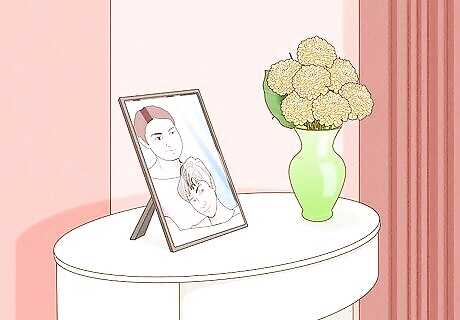
Yellow zinnia flowers represent thoughts of an absent friend. This meaning dates back to the Victorian era. Zinnia flowers are powerful symbols of remembrance for a loved one who isn’t near you, whether they’ve passed, moved somewhere far away, or you’ve simply grown apart. Place these beautiful flowers in your home to serve as a reminder of your fond memories with this person, or send them to your friend to let them know you’ve been thinking about them. Over time, zinnia flowers have also come to represent endurance due to their durability and the fact that they are one of the longest blooming flowers.

Marigolds symbolize remembrance for a loved one who has passed. These vibrant, fragrant flowers play an important role in The Day of the Dead (Día de Los Muertos) in Mexico. On this holiday, families build beautiful altars to pay respects to their departed loved ones. They then scatter marigold petals to form a path to the altars, so that their loved ones can find their way to them. In the Victorian era, marigolds were also associated with death and remembrance. They were considered symbols of mourning for departed friends or family members.

Yellow water lilies are associated with rebirth and enlightenment. Water lilies have special significance in Buddhism and Hinduism, stemming from the flower's unique bloom cycle. A water lily's petals close up each night and reopen again in the morning, serving as a representation of endless spiritual rebirth. They’re also thought to represent enlightenment because these beautiful, pristine blooms emerge from dark, muddy waters. These flowers are also associated with the zodiac sign Pisces, so they would make a great birthday gift for the special Piscean in your life!

Yellow roses have had different symbolic meanings over time. In modern times, yellow roses are associated with friendship, and they’re often given as a sign of thanks or well wishes. In the Victorian era, however, yellow roses were seen as a subtle way to rebuff someone’s unwanted romantic advances or end a relationship. In other words, if you wanted to let someone down easily, you could give them a yellow rose to get the message across without having an awkward conversation. This meaning of yellow roses is definitely not as widespread anymore. However, if you wanted to try to bring this trend back, you could send a yellow rose along with a short note letting someone know you’re not interested. Another fun fact about yellow roses is that the king of Sweden reportedly sent a dozen yellow roses to his wife, Queen Silvia, each day for four whole years. All together, this totals 17,532 roses!

Yellow tulips symbolize unrequited love. Despite their bright, cheery color, these flowers are associated with hopeless or impossible love. Sending someone a yellow tulip means that you have romantic feelings for them, but you know they don’t feel the same way about you. This can be a poignant way to say “goodbye” and start the process of moving on. The association between yellow tulips and unrequited love dates pretty far back, but in modern times, yellow tulips have started to take on a few more positive meanings. Now, they often represent happiness and joy, and some people believe that planting yellow tulips in a family’s garden invites prosperity.
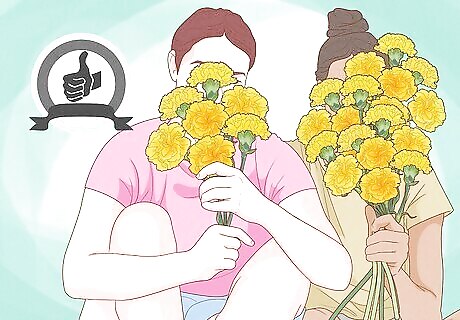
Yellow carnations represent romantic rejection and regret. Like yellow tulips, yellow carnations are associated with disappointments in love. Although these flowers are certainly vibrant and beautiful, they symbolize the negative experience of being spurned by a lover. They also represent feelings of regret, so you can send them as an apology to someone you’ve wronged, especially if this person is someone you had a romantic relationship with.

Yellow hyacinths symbolize jealousy and dislike. These flowers have a particularly intense negative meaning—they represent feelings of envy and contempt. So, if you’re looking for flowers to send someone you love, you may want to steer clear of yellow hyacinths! However, if you need to send a gift to someone you strongly dislike, yellow hyacinths may be the perfect choice. This allows you to subtly convey your negative feelings toward them without actually saying anything offensive!
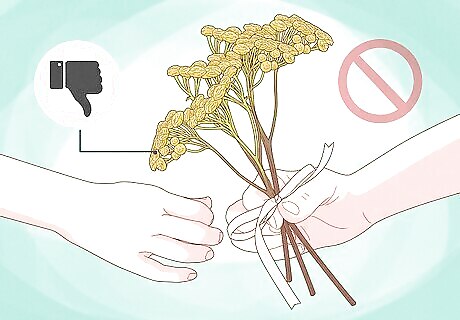
Tansies are associated with hostile thoughts. In fact, during the Victorian Era, these flowers were thought to convey the message, “I declare war on you.” This is a pretty dramatic expression of dislike! So, if you’re sending a bouquet to someone you love and esteem, make sure there are no tansies in sight. However, if you want to convey that you’re upset with someone or consider them an enemy, you could send them tansies to subtly get your point across.
Other Flower Color Meanings
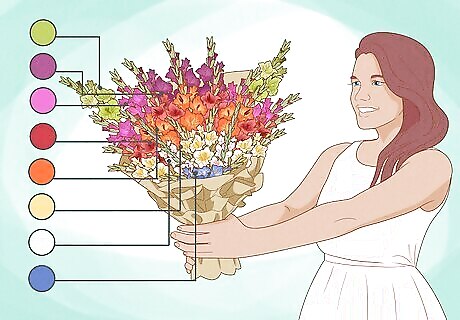
Combine different flower colors to create an extra meaningful bouquet. If you’re building a flower arrangement for someone special, consider adding other flower colors to create a more complex meaning. For example, if you’re sending yellow flowers to cheer up a friend who's been struggling with their health, consider adding some green flowers, which represent wellness and renewal. Here are the meanings of other flower colors so you can get creative and create the perfect, unique bouquet. Red: romance, love, passion, desire, courage, strength Orange: warmth, enthusiasm, happiness, energy Pink: platonic and romantic love, playfulness, femininity, gentleness, grace Green: health, wellness, youth, harmony, renewal, rebirth, good fortune Blue: peace, serenity, calm, truthfulness, openness, trust Purple: royalty, wealth, elegance, wisdom, intuition, mystery White: purity, innocence, honesty, sympathy, perfection




















Comments
0 comment